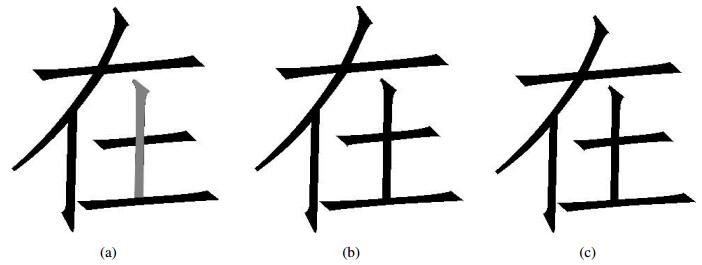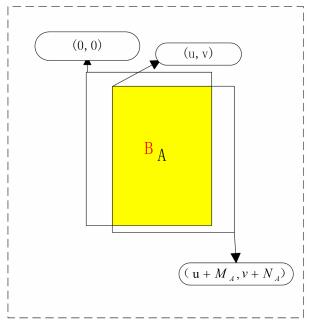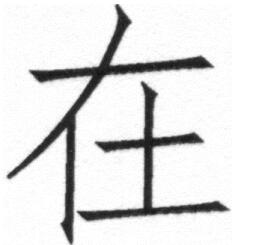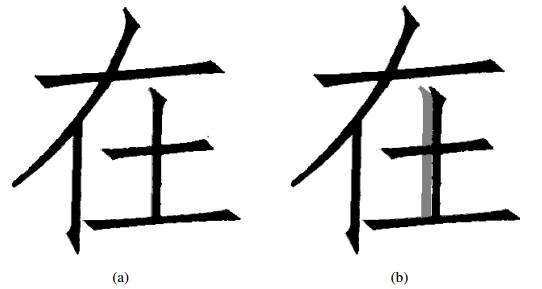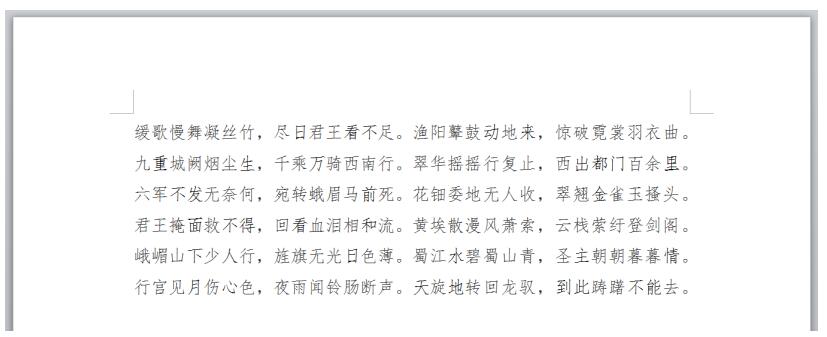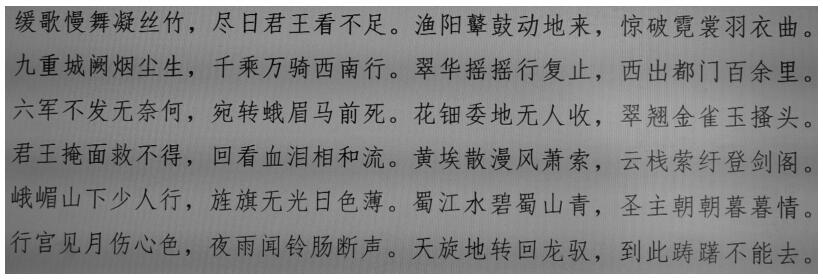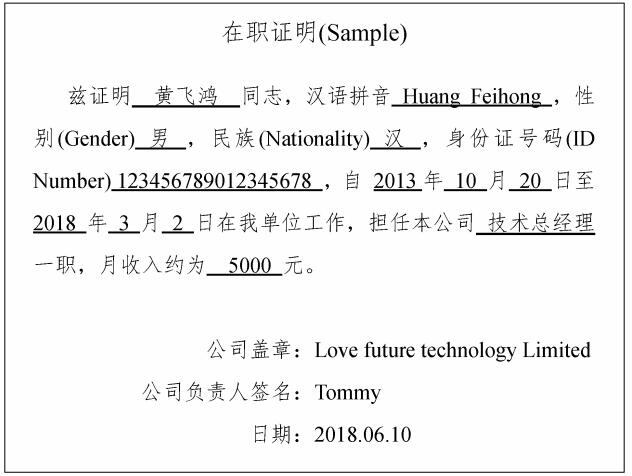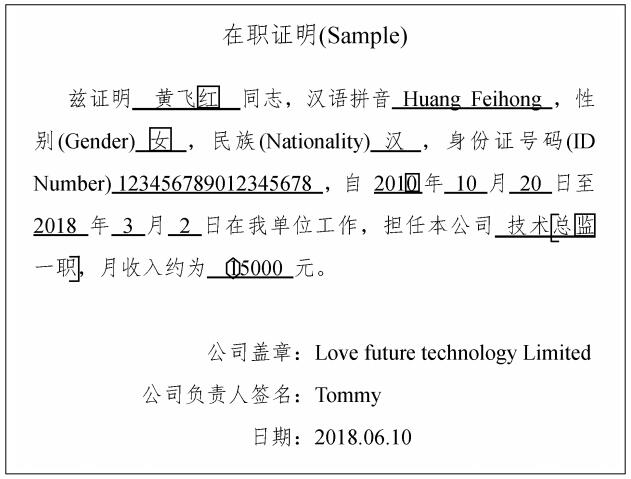1. Introduction
There is a shift of energy systems toward the use of more renewable energies with governments worldwide setting ambitious goals to increase their share of green energy in production and consumption. For instance, Germany’s “Energiewende” (Energy Transformation) is an impressive goal for the country to reach a 55-60% renewable energy production by 2035 [1], by expanding renewable energies, energy efficiency, and electro-mobility sectors.
By mid-2014, worldwide wind capacity reached 336 GW on-and off-shore, and an additional 360 GW is expected by end of 2014, thereby covering around 4% of the worldxs electricity demand , with the global prognosis by 2020 to be greater than 700 GW. The world energy market has developed significantly in 2014: China, the U.S., Germany, Spain, and India still represent 73% of the global wind capacity with Asia’s rapid growth overtaking Europe as the leading wind continent. Within Europe, Germany has the best wind market with a total capacity of 36.5 GW, ranking third in the world for wind-installed capacity. In the case of North America, the U.S. had a dramatic drop in the first half of 2013, but in 2014 recovered its market and is still second worldwide in wind-installed capacity, with 62 GW. Additionally, Mexico has been part of an emerging wind market in Latin America (together with Brazil) . However in the last few years, Latin America’s wind energy has increased at a more modest level, Mexico is the 21st country with wind-installed capacity of 2 GW (with Brazil becoming third largest market for wind turbines and 13th in world ranking) [2].
Important factors come into play in wind energy implementation, political institutions, natural resource endowments, policy deregulation, state GDP, electricity per person and price, nonrenewable energy prices, possible regional Renewable Portfolio Standard (RPS) policies, and consumer demand for green power [9,10]. Forerunners such as Germany [11,12] and the U.S. [9,11,13] and emerging countries such as Mexico [14,15] have attempted to create mechanisms that allow for easier development of wind energy and allow factors such as endowments, regulation, and participation to further implement the industry into the energy sector. But with these factors come challenges proponents and investors must face. Factors within politicaland market phenomena, spatial planning and their limitations, environmental conflicts, and social acceptance with local populations all stem from the cooperation and planning in multi-level governance systems.
This paper is broken down into sections including case studies from Germany, the U.S., and Mexico. The first section discusses the positive aspects of multi-level governance but with it challenges proponents must face in developing wind energy. Following, policy and market strategies have created assistance in developing renewable energies, but can become complicated for continued growth in wind energy. The third section covers siting and spatial planning implications while also providing insight to measures that can counteract conflict. The fourth section discusses the relationship of policies that protect the environment with policies promoting renewable energies while the fifth section analyzes social acceptance and wind energy development participation. Lastly, the paper discusses enhanced outlooks in policy, planning, and operational innovations that may curtail challenges, with focus on onshore wind energy development.
Table 1. Overview renewable energy goals and 2014 status in USA, Germany and Mexico.
| Goal Renewable Energies | Year | Goal Wind Energy (MW) | Year | Installed Power Renewable Energy (2014) | Worldwide ranking (WWEA, 2014) | Installed Wind power capacity Onshore (mid-2014) MW | Installed Power Wind Turbines |
| [1]Total number of operating utility-scale wind turbines at the end of 2012 as there is no current estimate
[2] From total: 21.07% hydro, and just 1.1% from wind energy and the rest from other renewable sources Source: [1,2,3,4,5,6,7,8] |
| USA | 20% | 2030 | - | - | 16% | 2 | 61, 946 | >46, 1001 |
| Germany | 40-45% | 2025 | Growth rate of 2, 500 MW per year | 28.50% | 3 | 33, 757 | 23, 645 |
| 55-60% | 2035 |
| Min. 80% | 2050 |
| Mexico | 23-26% | 2024 | 5, 080 | 2016 | 23.08%2 | 21 | 1, 992 | 1, 927 |
| 12, 176 | 2025 |
2. Multi-level governance
Great strides have been made in the transition of producing and integrating more renewable energy. Federal systems as those in Germany, the U.S., or Mexico with multi-level governance structures have seen changing relations between the different governance levels, and the “increasing variety or organizations and individuals beyond the government who are becoming involved in
policy” [16]. This type of governance system requires different authorities from federal levels to states, regions, counties, and municipalities to collaborate. However, conflicts may arise between the different levels, especially when planning decisions and the actual implementation of projects take place [17]. For example, problems for federal governments could be fostered when approval procedures for wind farms differ widely among U.S. states. Permitting processes rely on various responsible parties, depending on the owner of the proposed land site and who is developing the project [11]. Multi-level governance therefore must face decision-making uncertainties, regional differences (e.g. wind potential) , and the existence of competing land uses in the area [18].
While financial incentives, federal laws, and policies are enacted from the top levels (federaland supranational) , influences in wind energy development can come from lower levels (regionaland local) in terms of local acceptance, nature protection criteria, and regional added values (e.g. as discussed by Cowell [19]) . Federal state specific regulations can foster or additionally complicate the process. So far, Germany’s wind planning and development has no specific strategic coordination from the top level, besides financial incentives regulated by law (which is similar in the U.S. [20]) , but decentralized development can be observed where lower administrative units increase their share of renewable energies independently (e.g. 21) . This bottom-up approach can be established on sub-national levels by developing strategies for energy use or climate protection on localand /or regional levels [22], as well as forming citizen/civil cooperatives and community ownerships for new energy projects.
In contrast to governments where bottom-up movement plays an important role, the case study in Mexico (in a later section) gives an example where a top-down planning approach can trigger negative impacts such as local opposition to wind development. The decision-making direction from the top down does not provide efficient possibilities for effective public participation [15]. The financial support from international market-based policies has limited, in the case of Mexico, the participation of stakeholders and civil society in the wind energy planning process, mainly due to no national regulatory framework for participatory mechanisms [15,23].
On one side, decentralized initiatives regarding wind energy development are innovative, as they create a need for producers and operators to specialize, find solutions tailored to local contexts, and provide opportunities for mutual learning for all stakeholders and proponents [24]. These systems are expected to add more value to the region, create jobs [25], and increase public acceptance as well as to allow a more democratic production and supply structure [26,27]. On the other side, decentralized systems can cause a lack of communication and coordination on the higher strategic levels in terms of grid expansion, discontinuous energy supply, uneven distribution of energy facilities among the federal states, distance to consumers in sparsely populated areas [22], and the resulting uneven spatial distribution of economic advantages and disadvantages [18]. These changes bring in new actors and interest groups which can alter actor constellations significantly [18], leading to an even more urgent need of more cooperation to push wind energy development. Existing steering mechanisms of multi-level governance systems are characterized by a duality of influences. Klagge (2013) [18] discusses two impulses initiated on the national level: Economic incentives through energy policies, e. g. feed-in-tariffs, and on the other h and spatial planning processes which are put into concrete terms on regionaland local levels. Thus, communication between these influences in this energy transition towards more renewable energies is necessary [27]. For instance, Germany is at a distinctive stage in this transition where coordination is needed in order to steer the “Energiewende” ship [22,28].
Case Study: The bottom-up approach in Schleswig-Holstein, Germany
The German federal state of Schleswig-Holstein shows a good practice example of bottom-up governance between different administrative levels, efficiently working and integrating all wishes and suggestions from various proponents. Through the integration of all administrative levels as well as public participation (financially and in the planning process) , less objections and an increasing acceptance from local communities (see Social Acceptance section) was achieved, benefiting the creation of value in the region.
Schleswig-Holstein’s bottom-up approach worked by a simple but expensive process, integrating municipalities and counties into the process of finding new areas for wind energy. First, the counties elaborated concepts (Kreiskonzepte) and took into account the wishes and proposals of their municipalities regarding priority areas for wind energy. The participating municipalities discussed possible areas in public hearings and partly via local referendums [13]. After the application of other planning criteria (e.g. buffers for protected species, protected historic buildings and monuments, and characteristic land scapes) , the counties finalized their integrated county concept. These informal instruments where then examined and evaluated by federal state planners who developed a first draft of a new regional plan (in Schleswig-Holstein, the federal state is responsible for regional planning) . This draft was then again subject to public display and thereafter the new regional plan came into force December, 2012 [29,30].
While a top-down impulse can be given through market factors and respective laws from national governments, it is not always effective. Nonetheless, German energy and spatial planning policy underlies the concurrent legislative powers, meaning that, in general, the federal states can enact laws so long as the federal government does not exploit their legislative power [31]. A second impulse is provided by economic incentives, which influence the realization of projects. This includes successful feed-in tariffs (FIT) (e.g. Germany, Spain) , RPS (e.g. U.S. states such as Texas) , and green energy options (e.g. 11 U.S. states, and Germany) .
Most important in multi-governance systems is the communication and coordination of activities between local, state, and federal level [22,27] in order to facilitate issues within the factors of policy and market phenomena, siting, environmental protection, and social acceptance. This best practice would include simultaneous involvement between all governance levels, providing suitable wind energy development information to all in order to find sustainable solutions [24].
3. Policy and market phenomena
Policy factors that support the implementation of wind energy development include: Comm and - and -control policies such as RPS, market-based policies such as required green power options and Clean Development Mechanism (CDM) , and incentive-based policies such as clean energy funds (CEF) and FIT. These policy instruments can be influential in this sector, but as they are implemented at different levels of government, and have volatile continuances, their success can be unclear and is undetermined whether growth will persist in wind energy development. The success of each of these policy designs for renewable energies is based on different political environments, and their electricity markets nationally or statewide. Additionally, wind energy proponents face economic, structural, and political variables dependent on the location of future projects [32].
3.1. Renewable Portfolio Standards & green power options
RPS are state level incentives m and ating energy utilities to include specified capacities or sales for renewable energies into the energy market. This policy mechanism has significant impacts for renewable energies [32,33,34], not only encouraging technologies to incentivize competition [35] but also stay as a market-based approach to allow many states, for instance in the U.S., to invest in wind energy projects and exp and in this industry greatly [32,33,35,36]. Furthermore, CEFs can advance RPS sales requirements, as these incentive-based programs are “carrots” [32] for states to stay on course to ensure renewable deployments such as wind energy projects. State-level CEF programs assist in funding grants, loans, and incentives for research and development and actual deployment regardless of any financial support they may receive from governments. However, a challenge in using CEFs is the delay between receiving the award and the actual start of the project construction, averaging four years in the U.S. [32]. Required green power options have been another market-based policy mechanism giving customers the option to purchase renewable power at a premium, creating increasing demand for renewable energies while allowing consumers to express their preferences in energy. However, differences in policy effectiveness [36], administrative and deployment
barriers [35,37], and environmental factors (i.e. wind quality) [10,35] determine and can hinder further development. For instance, in the U.S., there is no single driver for wind development [9] and can be due to various state policy designs: Only 11 states offer green power energy options, and Texas leads in RPS due to minimum government involvement and least cost [35]. In Germany, the green power option has been available since the market liberalization in the late 90s [38] relying on feed-in tariffs (similar to Spain [39]) , while in Mexico none of these options are yet available.
Case Study: Removal of tax incentives in Idaho, U.S.—a negative fiscaland economic impact
In 2012, Idaho’s wind energy capacity was 675 MW, growing from 75.22 MW in 2005 following the passage of a state incentive tax rebate for alternative energies [33]. Opponents including some state officials were upset about the possible change in scenery, individual property values, sense of local place, and expressed concern about the early cost estimate of $47 million for the tax rebate— despite what future revenues it would bring in— and its lack of effect on Idaho’s general state fund. An unfortunate reality of state officials is their tendency to look at immediate costs, spend based on current resources, and cut incentives, expenditures, and revenue collection efforts for short-term reasons in times of economic slumps. In July 2011, Idaho legislature failed to approve the extension of the “sales and use tax rebate incentive” [33].
While Wind energy producers can benefit from the 1978 federal Public Utility Regulatory Policies Act (PURPA) , which promotes the development of alternative energy technologies by requiring electric utility companies to purchase alternative energy, Idaho Power and two major utilities effectively shut down PURPA by limiting contracts to an unrealistic option for commercial wind and solar projects [40]. Without any RPS, tax rebate incentives, and supporting contracts, 15 wind facility projects in Idaho were brought to a halt.
While wind energy project development is still at a st and still in Idaho, there is hope for development. In March 2013, clean energy advocates in Idaho gained a strong ally with the federal government as they stepped in and sued the state for failing to enforce PURPA [40]. As efficient energy is strongly supported, renewable energy advocates and wind energy developers have a tough battle ahead against Idaho Power.
3.2. Clean Development Mechanism (CDM)
Mexico has exp and ed their renewable energies portfolio through adopting a market-based policy established by the Kyoto Protocol (1997) called the CDM as an effort to address climate change in reducing targets of greenhouse gas (GHG) emissions [41,42]. Benefits of domestic development from CDM include transfer of technology and “know-how” from other countries and can successfully be seen in the case of China and India, who have taken advantage of this transfer and have become world leaders in wind energy [2,43]. Conversely, countries with no domestic wind industry have a lower rate of development [43] which hinders the effectiveness of CDM. In the case with Mexico, while CDM has been effective financially for wind energy, development has slowed not only due to ineffective public participation but also a weak regulatory framework [44], inefficient transfer of technology and domestic development, lack of sufficient private and public
infrastructure [14], and competitive public-private partnerships [45]. The lack of a participatory framework has led to poor stakeholder involvement (see Mexico case study) and challenges from local populations, weakening the potential for CDM to fully benefit wind energy development in Mexico.
3.3. Feed-in Tariffs (FIT)
Denmark and Sweden historically and Germany and Spain currently [46], have provided a stable, profitable, and incentive-based option for renewable energy to enter into the energy market. Germany has established a very successfuland mature feed-in tariff (FIT) system for the last twenty
years [11,12,46], providing investors with above-market prices offering long-term security. While FIT reduces policy volatility, it has been criticized for being costly and ineffective [47], with costs being reallocated to paying for electricity [46]. Similar to RPS, the success (e.g. Spain, Germany) and failure (e.g. Italy) depends on the country and their specific existing environment [37]. While FIT gives renewable energies the necessary push in beginning stages, the concern is their necessity to become competitive in the market, moving from incentive-based to market-based. This current development is observable in Germany [1] where FITs will be lowered, and it is a matter of time to see how wind development will adapt with this new change.
4. Wind turbine siting
After political renewable energy targets have been set, it is crucial to identify areas eligible for the placement of wind facilities in order to meet those targets. This implementation and development process has been difficult in many countries and regions due to complex planning and permitting processes, as various spatial demand s have to be included in a balancing process. Guidelines and conventions from different fields have a regulating impact on the availability of space for wind energy development [48] and can trigger land use conflicts. This mostly includes requirements on designated buffer zones from other land uses such as residential areas, roads, nature reserves, aviation security systems, or weather radar [e.g. 49-52]. Combining those buffer zones can limit the available space for further land zoning and thus project development. Additionally, aspects of adequate siting in terms of energy yield (wind speed and topography) and access (grid proximity and road access to turbines) are intersected with remaining land [53]. Internationally, the idea of buffer zones has been discussed for nature (e.g. protected areas in Mexico) and residential areas (e.g. UK) but in both cases these proposals were withdrawn [54,55].
4.1. Residential areas
For wind energy during the past years, general support for continued development has been
high [56]. However, acceptance at local levels for turbines can be lower [56,57] as hosting communities worry about changes in quality of life [58,59] and property value [60]. Yet recent research indicates wind turbines in close proximity to residential areas can cause visualand health impacts by lighting, shadow casting, noise and low frequency sound [61,62,63]. A possibility to minimize local discontent for wind turbines is siting at a publicly accepted distance to residences [64].
Case Study: Buffer zones for residential areas in Bavaria, Germany
Wind energy planning guidance documents often suggest a certain separation distance between an onshore wind turbine and residences. They might suggest that within a distance of 500-1000
m [65]or a factor of ten times the height of a facility (as suggested in 2014 by the Bavarian state government [66]) , no turbines should be sited. Issues in this approach can be seen in wide-ranging distances that are implemented without a case-by-case review. Acting from the assumption that turbines in Germany and particularly in the state of Bavaria have an average height of approximately 160-190 m [67], this could lead to required distances of 1.6-1.9 km. An intersection of the remaining land (with a buffer zone of 2 km) with required wind speeds calculated by the Bundesinsitut für Bau-, Stadt- und Raumforschung (BBSR) (2014) [68] came to the conclusion that only 0.86% of the state is then eligible for wind energy development. Buffer zones implemented in regional planning can therefore limit the availability of land for wind energy development to such lengths that an achievement of high renewable goals becomes unlikely.
Additionally, instead of using buffer zones, other solutions such as curtailment to limit nighttime noise, the use of less stress evoking types of light [63], or lighting as needed can mitigate some impacts on individuals (e.g. stress through annoyance, distraction, or disturbance) . Also, siting turbines with limited visual impacts from residents or using a previous illustration of potential developments (e.g. 3-D-visualizations) can raise acceptance [69] and , therefore, substitute buffer zones to some degree.
4.2. Proximity to infrastructure
Wind development is often concentrated in areas with existing pressures from other infrastructure development in order to bundle infrastructures (e.g. roads, railroads, or transmission lines) [70]. Wind turbines in close proximity to roads can, however, cause security problems in cases of technical incidents such as fire or the detachment of a blade, as well as the possibility of icing events due to low temperatures [61,71]. Tumbling or gliding fragments can be thrown up to approximately 2, 000 m [61]. Consequently, a security buffer zone is often placed around roads and excluded from siting with a recommendation ranging from 15 m for district roads up to 300 m for interstate roads/highway in Germany [70]. Strict buffer zones could be overcome by the installation of safety equipment (e.g. ice sensors, active heating or lightning protection) and regular maintenance inspections [70]. Based on those precautionary measures, case-by-case reviews could lead to an approval even within a buffer zone.
4.3. Aviation security
In several countries such as the U.S., Germany, and Sweden [49,50,52], potential effects caused by wind turbines on radar installations delay and partly prevent further development of wind energy. In Germany, projects with about 1, 700 MW [72] have been denied on the level of permission due to conflicts with radar devices. While it is difficult to assess, the influence of wind turbines on Civiland Military matters depends on the technology used [49] and obstacles such as wind turbines can reduce a security system’s quality and range [50,73]. With the aim of ensuring aviation security in several countries, a radius around the facilities of up to 15 km (for VHF Omni Directional Radio Range, i.e. VOR) is set for computer simulation assessment [73], and can further restrict the available area for wind energy. Additionally, buffer zones to other radar devices that experience conflicts with wind turbines such as weather forecast radar installations [50] are considered during siting processes and can limit the available space for wind energy development.
4.4. Nature reserves
Wind energy causes impacts on wildlife through direct and indirect mortality, barrier effects, displacement of species (especially bird and bat species) and disturbance [74, e.g. 75]. In order to protect wildlife, in several cases radiant buffer zones around breeding areas, protected habitats, and passageways for migrating birds are implemented. Depending on the targeted planning level (regional planning or permission) and if buffers are legally binding or simply recommendations, their impact magnitude on the siting process can vary. In Germany, buffer zones have been developed for birds following the precautionary principle [76] and can be seen in the case study below. A study in the state of Kansas has also developed avoidance areas around bat habitats [77]. However, in order to protect wildlife, avoidance of impacts with good macro- and micro-siting as well as minimization of impacts through selected measures (e.g. curtailment) are sophisticated solutions as well. For example, the option of repowering is not to be neglected, as several turbines can be replaced by one turbine and still increase energy production [78].
Case study: Working Group of German State Bird Conservancies (2007) : “Recommendations for distances of wind turbines to important areas for birds and breeding sites of selected bird species” [51]
For Germany, in 2007 a nationwide working group defined buffer distances of "wind turbines to avifaunistically important areas or nest sites of species particularly sensitive to interference that are necessary from the perspective of species conservation" [51]. The paper includes species specific data for exclusion zones as well as radiuses for further assessment for sensible breeding birds. Additionally it identifies exclusion zones around habitats and protected areas. It thereby intends to provide guidance in (regionaland local) spatial planning as well as in permitting procedures. The guidance is currently revised and the process has been criticized in particular by planners, as distances are defined as minimum distances and therefore exclude areas for development prematurely, disregarding the possibility of project-level mitigation measures in order to preserve a certain conservation status [79].
5. “Green vs. green” dilemma
The green vs. green dilemma involves the disjointed relationship between environmental policies which protect wildlife to those which promote renewable energy for climate
protection [76,80]. With worldwide concern of climate change, regulations and goals are increasingly being established and the focus to invest in renewable energies has been a driving force. However, nature and animal conservationists argue wind energy directly and indirectly affects habitats and surrounding ecosystems, growing concern in ensuring environmentaland species protection while creating policies that promote wind development and operations. Several authors [75,81,82] conclude that turbine characteristics such as size and capacity, siting, abundance of turbines, and human activity all determine the risk to wildlife through possible habitat loss, habitat displacement, avoidance (e.g. barrier effects) , and turbine collision [74]. Policies and regulations have been created in different countries aimed at lowering these environmental concerns, but with conservationists and policy-makers still concerned about wind energy’s environmental impacts, developers struggle in implementing wind energy development [76]. Through effective planning and siting, negative impacts on wildlife species and the surrounding environments can be mitigated [83] while European and specific country goals in climate protection are still priority.
5.1. Impact Mitigation
Wind development through mitigation can avoid impacts when possible, minimize remaining impacts, and then compensate unavoidable impacts while still reducing CO2 emissions. Mitigation measures are listed in state or federal documents (guidelines, regulations or policies) , depending upon the country, state or region a project may fall under (e.g. US Fish and Wildlife Service (USFWS) land -Based Wind Energy Guidelines, Ministerium für Klimaschutz, Umwelt, land wirtschaft, Natur- und Verbraucherschutz des land es Nordrhein-Westfalen (MKULNV) Leitfaden (e.g German regional guidelines) ) . However, lengthy permitting and approval processes can possibly hinder or completely halt construction of these sites. Environmental Impact Assessments (EIA) and Strategic Environmental Assessments (SEA) are key regulatory mechanisms supporting sustainable energy projects and are used to determine and , where possible, mitigate the effects a project has on its environment. These mechanisms address environmental problems, sustainability, and integration of policy— and planning—making either on a case-by-case basis (i.e. EIA) or as a systematic process (i.e. SEA) [11,84]. EIA and SEA inform proponents of all environmental concerns they must take into account and mitigate. Mitigation can include a number of measures ranging from feathering and cut-in speeds (measures of avoidance or minimization) to rehabilitating or restoring an off-site piece of land to offset damage done by the project (compensation measures) [81,82].
One concern mitigation brings to wind energy development is the possibility of additional, costly, and time-consuming measures which may not be financially beneficial to stakeholders invested in wind energy projects. These environmental impact policies can be political
“chokepoints” [80], hindering development of wind facilities by answering ecological questions such as: (1) Does this project meet environmental Standards?, (2) What environmental requirements have been met in this project?, and (3) will endangered species be affected, if at all? [80]. While it is vital to have these environmental laws and regulations, developers having to answer such questions may feel these slow down implementation and development, or risk the complete shutdown of their projects. Conclusively, the green v. green dilemma includes political, legal, and administrative drawbacks the renewable energy industry faces between local environmental conservation and global climate change mitigation [80,84].
Case Study: Beech Ridge Wind Energy Project in West Virginia, U.S.
The Beech Ridge Wind Energy Project is located in West Virginia, U.S., consisting of 67 wind turbines (Phase I) and is currently constructing another 33 turbines (Phase II) . When the wind facility was approved for development in 2006 and set to begin construction in late 2007, it was not until mid-2009 when construction began as previous case hearings and decisions delayed the project. Once construction began, Beech Ridge was again involved in litigation, alleging the project violated Section 9 of the U.S.’s Endangered Species Act in failing to create and apply for an Incidental Take Permit (ITP) for the endangered Indiana Bat (Myotis sodalis) and the endangered Virginia big-eared bat (Corynorhinus townsendii virginianus) . A federal district judge ruled that while the construction of Phase I be completed, Phase II could not begin until an ITP was approved and issued by the U.S. Fish and Wildlife Service for the Indiana Bat. Furthermore, the judge ordered immediate mitigation measures for the existing wind turbines, allowing them to only run during winter months when the bats were hibernating, so as to allow time for the completion of a Habitat Conservation Plan (HCP) and a Final Environmental Impact Statement (FEIS) to include full environmental assessment and improved mitigation measures.
Both the HCP and FEIS were completed in 2013 and the permit issued in December the same year, but with massive changes to the original project and additional mitigation measures. The developer dropped 24 turbines in Phase II to only construct a total of 100 turbines [85] and moved the site of Phase II further away from known bat hibernacula/caves. Some mitigation measures included limiting tree clearing, speed limits for vehicles, and implementing a turbine operation curtailment plan: This plan specifies feathering all turbines at less than 2 rpm below the 4.8 m/s cut-in speed beginning at sunset for a period of five hours from July 15 through October 15 (period with the highest peak in bat mortality) .
In conclusion, with litigation, “updated” mitigation measures, and changes to the project, the (now) 100 wind turbine project, which began nine years ago, is still under construction today. Cases such as this are a concern for many wind developers, investors, and policy-makers as these processes can quickly become lengthy and expensive.
6. Social acceptance
While there is an overall assumption of global positive opinion of wind power and impressive wind development targets, the challenge remains on the institutional setting as well as in the local level of social acceptance. Wü stenhagen (2007) [86] confers three aspects of social acceptance in renewable energy innovation: Socio-political, community, and market acceptance. Planning and siting dimensions are also emphasized as a limiting factor for achieving social acceptance, moreover when decisions in the national level implies local policies and its affectations. This factor can be of major importance in emerging countries where wind energy deployment can push localand regional development [87]. Socio-political acceptance is a more general definition, as it implies the general attitude towards renewable energies policies, the implication of the stakeholders in the decision-making process, and the general institutional framework within the process of wind energy development [86]. Empirical research shows community acceptance of wind energy and its legitimacy outcome depends on public attitude towards wind power which includes the following: land scape and visual impacts [88], as well as environmentaland social justice frameworks within benefit-sharing by wind developers and the benefits accepted by the community [89,90]. Concerning market acceptance, there is a common discourse that financial participation raises acceptance significantly [91,92,93]. Maruyama (2007) [92] argues that community wind power can be not only attractive for citizens, but also produces a “social innovation experiment” by boosting the participation at a local level. However, despite the fact public attitude is better within a community wind power scheme, it does not mean it brings overall positive opinions. Changing the development model towards promoting a local approach as w ell as consultation and early communications within the society can reduce this controversy [94,95].
For example, in order to raise local acceptance and to maintain added value in the region, concepts of financial participation for local populations have been implemented in Denmark. In 2009, the Danish Renewable Energy Act required project developers to offer at least 20% of ownership shares to those within 4.5 km of the wind energy project and subsequently to all inhabitants of the respective municipality. In Germany, the state of Mecklenburg-Vorpommern has been discussing in adopting this approach [96]. Some studies on social acceptance in Germany have found additional factors of success such as networks of support [88], community ownership, quality of information and consultation [93], as well as participation and transparency within the planning process [97]. In the case of the U.S., most successful experiences on siting are those with multi-stakeholder processes (e.g. U.S. Fish & Wildlife Service guidelines) [98], and as wind projects permits differ from state to state, a case-by-case approach in the U.S. can be most efficient.
Case study: Market-based policy and the growing opposition in Mexico’s top-down planning
Despite Mexicoxs great potential for expanding renewable energy, the country struggles in taking advantage in this sector. By the end of 2013, installed power capacity was 53.06 GW with only 1.1% from wind energy [99]. Mexico is one of the four countries that host most of the CDM projects, however mostly only biogas from breeding farms [100]. Most wind energy deployment has been financed through CDM, with 31 out of 49 wind projects in the country, corresponding to 4, 429 MW installed capacity, from which 20 out of 23 wind projects were developed in Oaxaca [100,101].
Concerning technology-transfer through CDM, Mexico has the highest rate of technology imports among the major host countries for CDM [102]. However, high level of wind technology import does not allow development of domestic technology. Additionally, wind energy development in Mexico is experiencing heavy public resistance, specifically where major development has been settled. In the Isthmus of Tehuantepec in the Oaxaca state, an area with high presence of indigenous
population [103], there is also a critical need to design a fair social benefits program [104]. Corbera und over (2012) [15] states that there is a limiting participatory mechanism (regulatory framework) of the civil society in the process of CDM project validation which can trigger further social conflicts. Nevertheless, there is little acknowledgment on dissemination of lessons and experiences for managing such social issues in the area [105], which could help to improve further development. The case study of Mexico illustrates how multi-governance processes influence the countryxs wind energy deployment, in which their top-down approach has caused negative impacts. Due to international involvement regarding CDM policies, domestic technological innovation seems hindered and proper public participation limited. The lack of proper participation as well as a weak institutional framework for renewable energies has created local opposition to current and further wind energy deployment. If Mexico exp and s its limited participatory framework, and establishes national requirements for a stakeholder consultation process beyond UNFCCC requirements [106], performance and acceptance of CDM projects may increase, thus improving further development in wind energy and domestic technological innovation.
7. Outlook
Wind energy development positively correlates with situations in the electricity market, dependencies on coaland natural gas, and government policies on reducing CO2 emissions contingent on the country. Innovations need to be designed to better implement wind development, minimize challenges, and cater to the country and their policies. As stated previously, better macro- and micro- siting in turbine placement in terms of energy yield and access, along with better technologies of safety equipment and radar devices are possible innovation methods to minimize wind siting implementation challenges. However, on a gr and er scale, better policy design, more efficient systematic plans, and the use of “adaptive planning” are other methods in innovating wind energy development.
7.1. Policy design
Creating a more effective policy can incentivize competition in wind technologies and continue the development of wind energy. Through each country’s best practices, establishing a hybrid policy using short term goals (e.g. RPS) with long-term effects (e.g. FIT) [35] can lead to a more stable process for investors, developers, and consumers in wind development. Another aspect to improve policy design is refining the issue of grid access and smart grid regulations for renewable energies as a whole [35,37]. Lastly, minimizing administrative barriers can increase homogeneity for planning procedures and development of wind energy [11]. If this idea is taken at a regional scale in countries such as Germany, it would reduce administrative process duration and increase higher utility gains [37].
At institutional levels, some criteria can improve and promote wind development in an environmentally sustainable way such as coordinated energy political institutions, legitimate planning procedures, improved SEA mechanisms, and stringent permission and assessment requirements [84]. Through better overall strategic planning, environmental impacts can be minimized while still aiming at climate change mitigation goals, lessening the green vs. green dilemma.
Lastly, addressing the challenge of acceptance in a wider approach could lead to better practices of wind energy implementation, where the fundamental factor is to adapt, manage, and create new institutional changes for combining all dimensions of social acceptance. Thus, these planning approaches could trigger trust between involved stakeholders and help to build better networks of support of wind development (e.g. Wind Powering America Initiative) .
7.2. Adaptive Planning
Adaptive planning and operation strategies (i.e. adaptive management) is an intuitive and practical concept aimed at maximizing renewable energy while minimizing, for example, wildlife interactions, shifting from up front decision-making processes to better planning models governed by a more post-project follow-up [76,107]. This knowledge accumulation and “learning by doing” [108] focuses on the “[reliance] on predictions and modeling, recognizing environmental dynamics, incorporating monitoring based adaptations, and being grounded in the creation of trust among stakeholders” [76]. However, developers and investors have concerns of its reduced, up front planning security, monitoring costs and continued implementation, and lack of disclosed data but “combining phased development with collaborative planning approaches could provide the trust and social capital” [76] to those involved, and establish better cooperation and communication between scientists and wind proponents allowing further development of adaptive planning and management of projects [109]. Impacts on wildlife are not fully understood, and this advanced and evolutionary process might help in more efficient planning and development of wind energy (e.g. in contrast to trialand error management) [76,109].
8. Conclusion
Wind energy development will constantly face challenges, at various regulatory and institutional levels whether it be regarding politicaland market factors, siting issues, green vs. green, and /or within social acceptance. Policy and market methods for renewable energy and wind energy implementation, i.e. RPS, green energy options, FIT, and CDM, are regarded as highly successfuland influential, but cannot be done on their own; the success of these incentives depends heavily on the structure of governance systems and their willingness to implement these methods. Coordination between different levels of governance, from a local scale to a supranational scale, must be a priority in order to minimize implementation and innovation challenges, mitigate climate change, and continue the development of wind energy.
Due to the creation of inflexible turbine-free zones, countries with limited land availability are challenged by the obligation of implementing buffer zones for several topics (residential areas, nature conservation, roads and aviation security) . To improve future development of wind facilities, it is suggested that the main focus not be on spatially limited Standardized buffer zones but be discussed and defined on a case-by-case basis according to specific regional conditions. As this can be very challenging, responsibilities either have to be distributed reasonably or the overall coordination must be limited to one governance level, leading to the main question of which level would be most suitable [21].
Lastly, acceptance of wind energy has a broader approach and the challenge remains on the institutional setting at all government levels as well as on the specific local setting. Thus, all levels of institutional conditions and decision-making, multi-stakeholder approach and network of support, quality communication within the society, and finally adaptation to changes are fundamental for effective wind energy planning.
Acknowledgments
We would like to thank the German Federal Department of Education and Research (BMBF) and the Germany Federal Ministry of Economic Affairs and Energy (BMWi) on the basis of a decision by the German Bundestag for funding some of the authors of this paper. We would also like to thank the DAAD-Conacyt for PhD scholarship funding.
Conflict of Interest
All authors declare no conflicts of interest in this paper.









 DownLoad:
DownLoad: 

